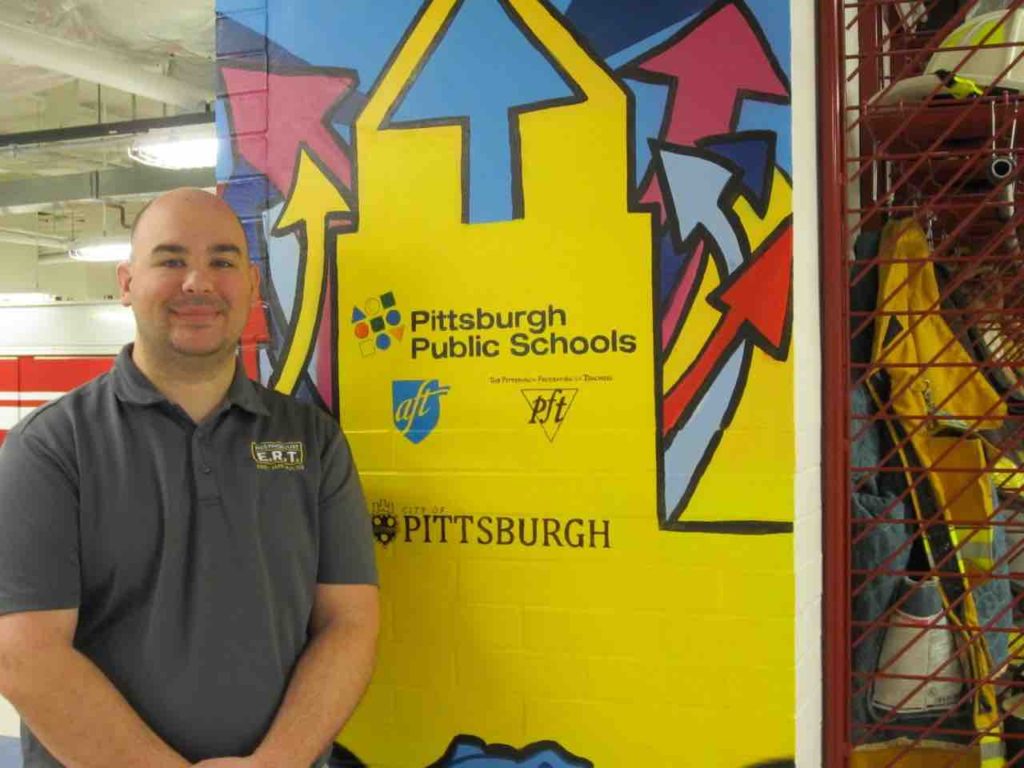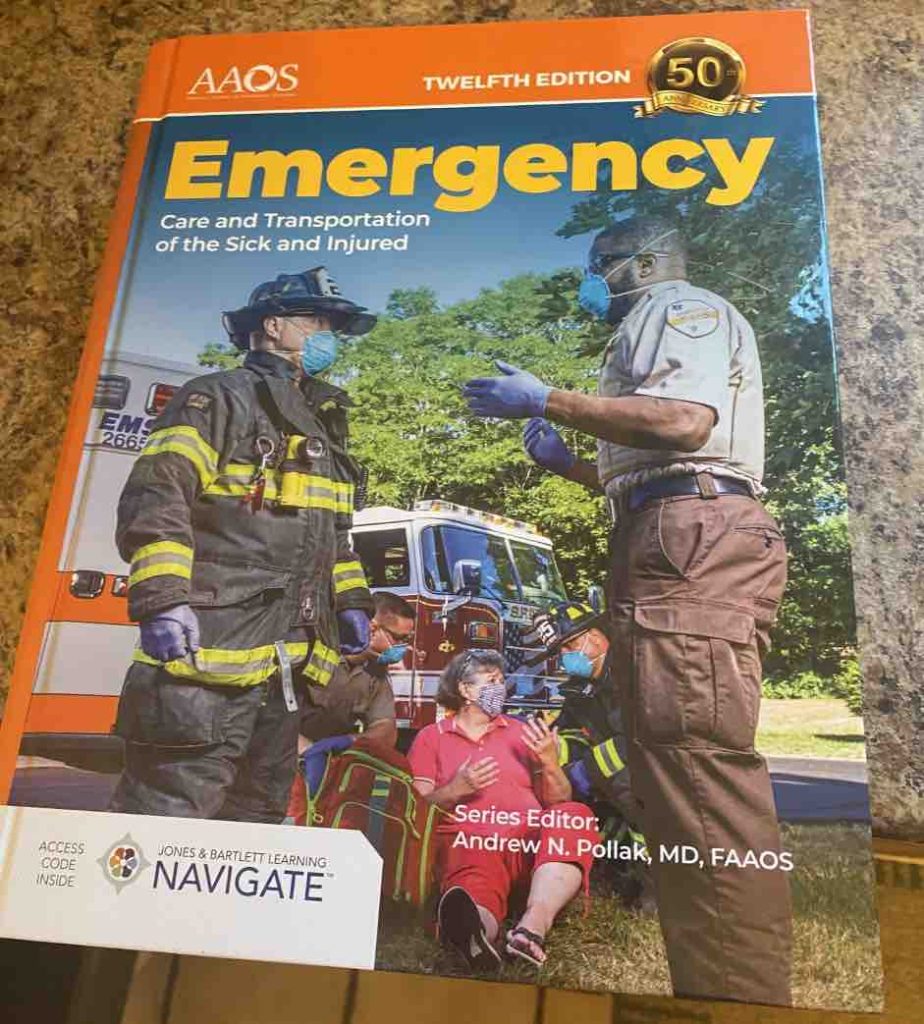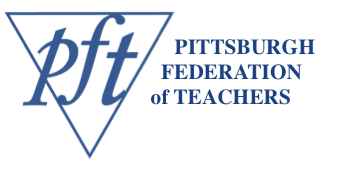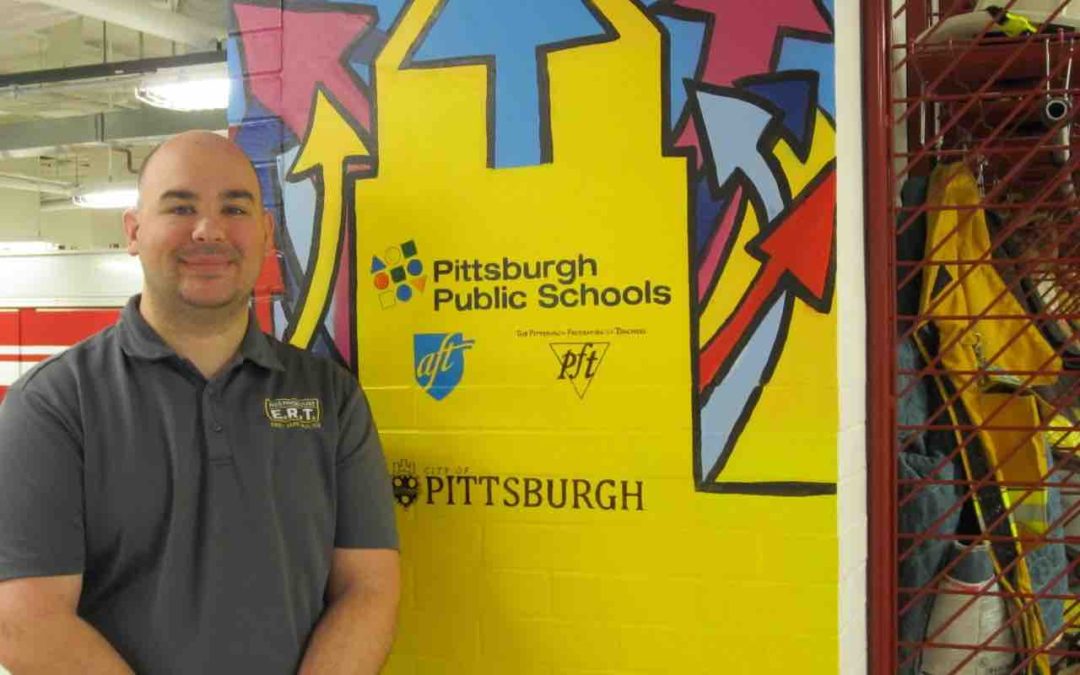
Name: Matt Patrick
Occupation & School: Emergency Response Technology at Westinghouse
Years In Education: 10 years
Years At Current Position/School: 5 years
Previously, I … taught for 5 years at the Greater Johnstown Career and Technology Center and I have been a certified Fire and EMT instructor since 2006.
We profiled Matt previously (on the old website) and have recreated that here–along with a fresh update at the top!
PFT: What are the greatest challenges for CTE in general, and for your program in particular, during the pandemic, and how have you creatively overcome them over the last year or so?
Matt: The biggest challenge for CTE is finding ways to keep students engaged in hands-on learning, that is why many students come to CTE –for hands-on learning.
For my program specifically the biggest problem was getting students certifications. Throughout the pandemic I have been trying to find online resources to use with my students so they can earn certifications. During the first semester my students collectively earned approximately 50 industry certificates. (Hazardous Materials Awareness, NIMS ICS 100, 200,700, 800, Blood borne pathogens, Traffic Incident Management, ICS 15.b Special Event Contingency Planning for Public Safety ICS 907 Active Shooter Response, and OSHA Healthcare!)
Anything that says ICS is a FEMA Course. Through funding CTE got from the state, we were able to get each one of my students a kit which contained a blood pressure cuff, stethoscope, and CPR mask which CTE delivered to each student through a contactless delivery. Through this my students are able to practice some hands-on skills.
PFT: What else have you been up to since last we touched base?

Matt: Over the summer, I was contacted by Jones and Bartlett publishing company to be part of a textbook review committee. I reviewed two chapters for the newest (12th) edition of AAOS Emergency Care of the Sick and Injured.
I reviewed a chapter about Head, Neck, and Spine Injuries and Geriatric Patients. The book was just released to the public on February 12, 2021, fitting for CTE month! My name appears in the book as a contributing reviewer.
PFT: Why is CTE so vital and essential to PPS students in particular? To the District? To the job/work force in general?
Matt: With the way the job market is going in today’s society, having 4-year degrees and not being able to get a job in what you went to school for is becoming a real challenge. CTE is vital for a student looking to get a good job and earn a living.
Especially in the public safety sector, the population of the workforce is aging and getting ready to retire. These are going to be those high-demand positions for years to come, and that includes the important admin roles as well. They need to fill those entry-level positions.
My CTE students (and CTE students in general) can finish high school and be able to go to work almost right away, no waiting. Students can graduate my program with their EMT certification. Plus we do HAZMAT awareness… and all kinds of preparation for the National Incident Management System (NIMS) Certifications that many of them will need to advance to the next level—which is a job.
NIMS is no joke—those are FEMA standards.
PFT: In your opinion, how has the PFT’s involvement made a difference for CTE? Has it been through partnerships we’ve helped facilitate? The AFT grant? How has our Union helped to make CTE stronger?
Matt: I am here because of the Innovation Grant. It enabled me to help recruit for the program, to secure some of the resources for the room itself, and gave me the breathing room necessary to write the curriculum for the program.
I was also able to have a one-on-one person (Darcy Tyhonas) as a fund manager to work directly with me to get this program up and running. You’re talking about me getting a lot of support as a teacher to be successful.
A lot of the assets we have on hand were donated, and to secure donations you need advocates like the PFT in your corner. We currently have an ambulance, a fire engine, and a police car.
Our fire team also has a very realistic forcible entry door simulator–it’s a great simulation of real-life door resistance—plus just over a dozen fully functional SCBA packs (breathing apparatus), a thermal imaging camera, multiple sets of turnout gear, and a fully functioning 4-gas meter.
On the law enforcement side of things, we prepare our students to take certification tests (a huge written text plus skill stations) – by the time they leave our CTE program they know how to conduct a traffic stop, issue a citation, investigate a crime scene, deliver a field sobriety test, lift fingerprints, handcuff a suspect… really valuable things.
PFT: What’s your favorite thing about teaching CTE in general, and your own subject matter in particular??
Matt: I think what’s nice is, with my program and with CTE in general, you get to really build good longer-term relationships with the students. It’s a little different for us; we see them for 2.5 hours a day, every day, AND we get to see them grow throughout the program, year after year.
So we enjoy them for three years rather than just maybe seeing them in the halls after they move on from grade to grade.
I have to tell you, the group of teachers that teach my program, throughout state and in this region… we are a close knit group. We help each other, we share ideas, and we have a Cohort that tries to meet annually to develop additional best practices.
It’s a great group of teachers for a great group of kids.


